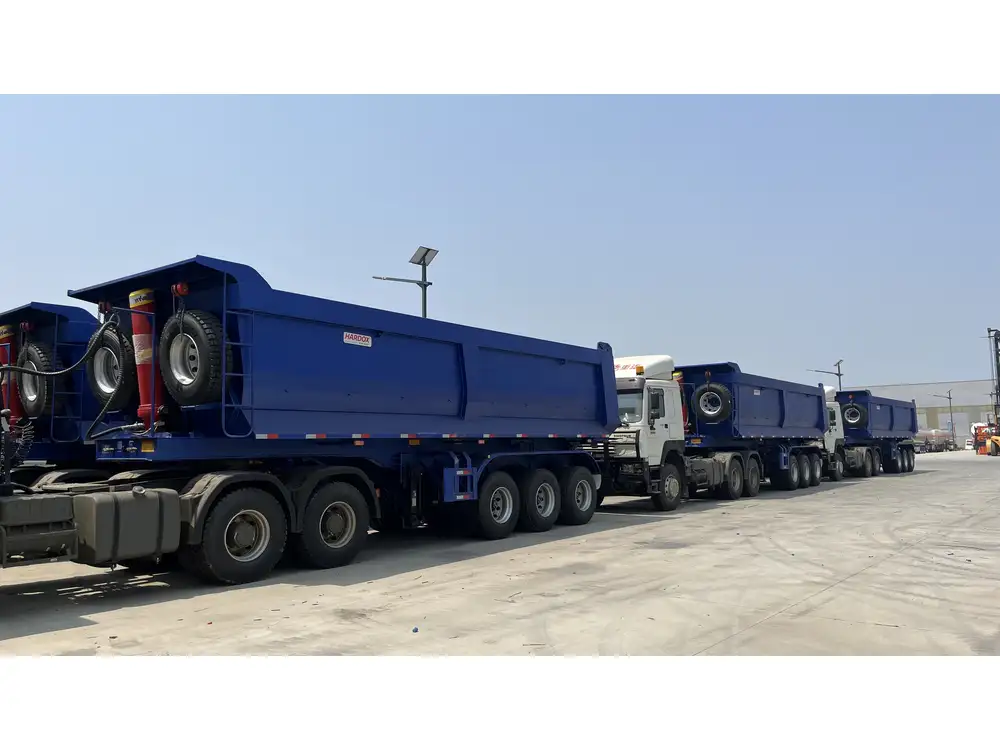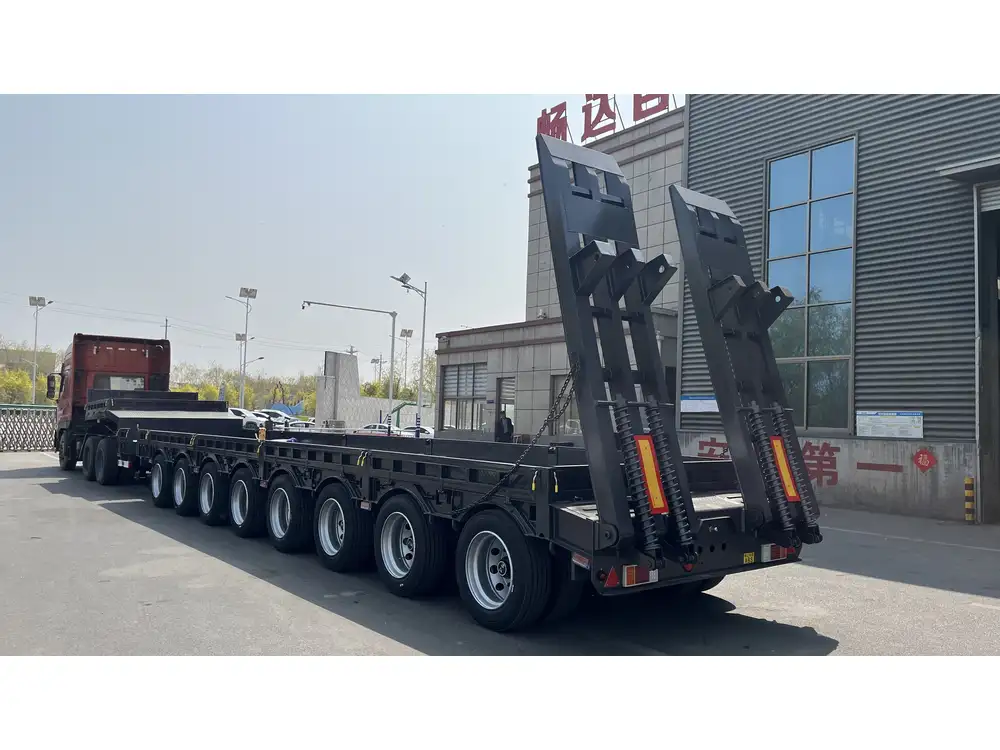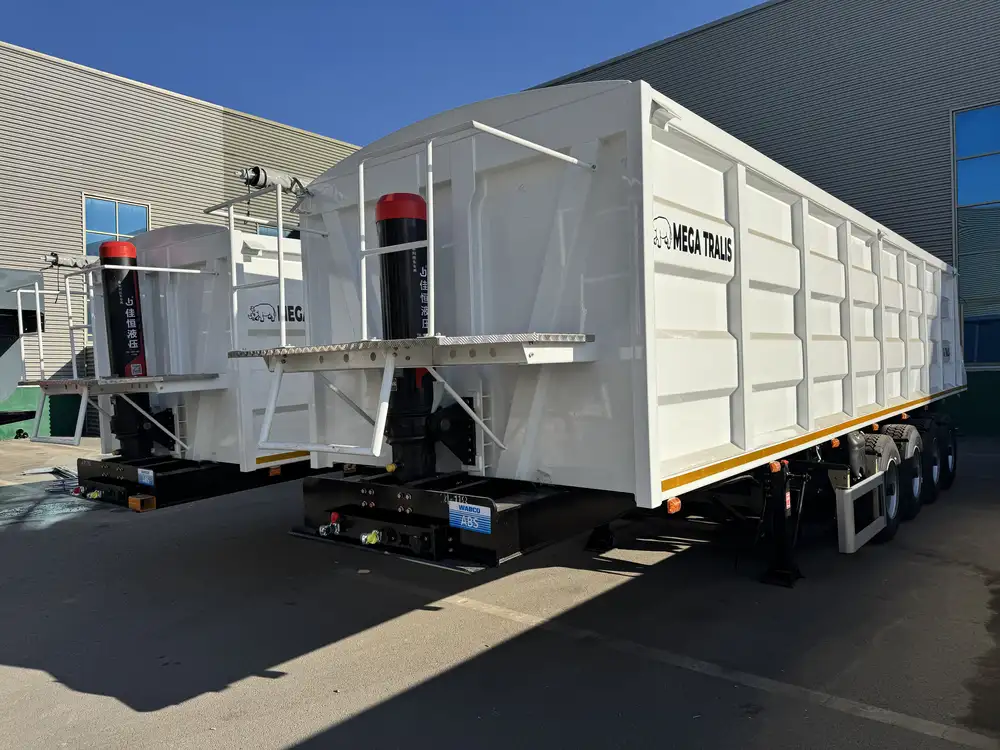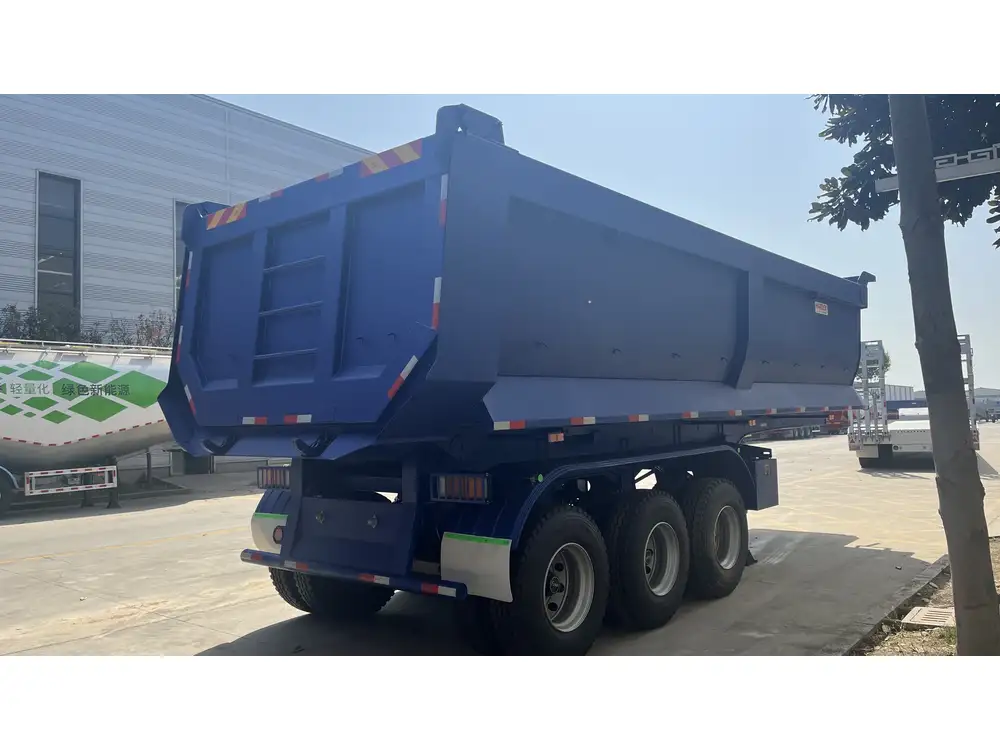In the dynamic landscape of the trucking and freight industry, the size and specifications of transportation equipment are crucial elements that dictate efficiency, compliance, and operational success. One of the key players in this realm is the tractor trailer flatbed—an indispensable tool for freight transport. In this comprehensive guide, we delve into the specifics surrounding the dimensions of tractor trailer flatbeds, exploring the variations in length, payload capacities, and other vital considerations for manufacturers, transporters, and logistics professionals.
What is a Tractor Trailer Flatbed?
A tractor trailer flatbed consists of a truck (the tractor) combined with a detachable flatbed trailer. This design allows for easy loading and unloading of goods, particularly those that are oversized, heavy, or have irregular shapes that do not fit well in standard enclosed trailers. Flatbeds are widely used for hauling construction materials, equipment, and machinery, making them a staple in various industries.
Typical Dimensions of Tractor Trailer Flatbeds
The dimensions of a tractor trailer flatbed can significantly affect its intended use, cargo type, and transportation requirements. Generally, flatbeds adhere to standard lengths, although they can be custom-built to accommodate specific needs.

Standard Lengths
48 Feet: One of the most prevalent sizes in the industry, the 48-foot flatbed is versatile for numerous applications and compliant with the standard legal length limits in several states.
53 Feet: The 53-foot flatbed has gained popularity due to its ability to haul larger volumes while still adhering to federal regulations for bridge laws.
Customized Dimensions: Some manufacturers offer flatbeds in various sizes, ranging from 24 feet to 40 feet or beyond, providing options for specialized cargo needs.
Table 1: Common Flatbed Lengths
| Flatbed Length | Common Uses |
|---|---|
| 48 Feet | Construction materials, general freight |
| 53 Feet | Heavy machinery, equipment, multiple pallets |
| 24-40 Feet | Specialty loads, lower volume shipments |
Width and Height Specifications
Most flatbeds are standardized in width, typically measuring 102 inches (8.5 feet) across their widest point. This overall width accommodates various cargo types while remaining compliant with U.S. Department of Transportation (DOT) regulations.

Height Considerations
Flatbed trailers have an average height of 5 feet from the ground to the bed surface. However, the height may vary based on design features such as the type of suspension system or additional components like tarps or side rails.
Load Capacity and Weight Distribution
Upon understanding the dimensions, examining load capacity is fundamental. The gross vehicle weight rating (GVWR) for flatbed trailers often ranges between 30,000 to 50,000 pounds. The actual payload capacity may vary based on weight distribution, specific axle configurations, and any additional equipment installed on the flatbed.
Importance of Load Securement
Flatbed cargo is typically transported without external enclosures, making securement strategies pivotal. Compliance with load securement regulations ensures safety and minimizes the risk of cargo shifting during transit. An array of securement techniques includes:
- Straps and Chains: Using webbing straps and chain binders to stabilize loads.
- Tarps: Covering flatbed loads with tarps to protect against weather.
- Blocks and Dunnage: Employing wooden blocks or dunnage to prevent movement.

State and Regional Regulations
It is paramount for operators within the trucking sector to acknowledge that regulations regarding dimensions—such as maximum allowable lengths, heights, and overall weights—vary by state. Local laws dictate legal loading practices, including:
- Length Limitations: States may impose different length restrictions for tractor trailer combinations; for example, some states allow up to 65 feet, while others limit it to 60 feet.
- Weight Restrictions: Each state implements its bridge formula for weight distribution to protect roadway systems.
Common Uses and Applications of Flatbed Trailers
Flatbed trailers serve an impressive array of applications. Understanding the common uses is beneficial for manufacturers and logistics planners considering purchase or rental options.
Construction Industry
- Building Materials: Flatbeds transport concrete slabs, structural steel, beams, and piping necessary for construction projects.
- Heavy Equipment: Cranes, excavators, and bulldozers that are too large for standard trailers typically require flatbed transport.

Agricultural Sector
- Machinery Transport: Agricultural equipment, including tractors and harvesters, often requires flatbeds due to their size and weight.
- Bulk Loads: Hay bales, pallets of feed, or other large agricultural products are frequently carried on flatbed vehicles.
Manufacturing and Distribution
- Machinery and Raw Materials: Flatbeds deliver raw materials such as steel sheets, coils, and other components integral to manufacturing processes.
- Oversized Loads: Specially modified flatbeds accommodate loads that exceed standard dimensions, such as wind turbines or prefabricated building modules.
Challenges in Flatbed Transport
While flatbed trailers offer flexibility and utility, they also come with unique challenges, which can affect logistics planning and operations:

Weather Considerations
Transporting open loads means exposure to the elements, impacting logistics planning. Rain, snow, or extreme temperatures may necessitate additional protective measures, such as tarping.
Complexity in Loading and Unloading
The lack of sidewalls on flatbeds can complicate the loading/unloading process. Facilities should have adequate equipment, such as forklifts or cranes, to ensure safety and efficiency.
Securing Cargo
Determining the appropriate securement methods requires a unique understanding of the cargo being transported. Improperly secured loads can lead to safety hazards or cargo damage.

Optimizing Logistics Planning for Flatbed Transport
When implementing a flatbed transport strategy, careful planning can enhance operational efficiency and driver safety. Consider the following tactics for optimizing logistics:
Route Planning
Utilizing advanced route optimization software can help identify the safest and most efficient paths, accounting for factors such as:
- Weight Limits: Assessing different roadways for weight restrictions to avoid penalties.
- Height Clearances: Ensuring routes are suitable for trailers, particularly when transporting oversized loads.
Load Management
Effective load management involves allocating weight evenly across the trailer to maintain balance and reduce the risk of load shifts. Utilize technology for tracking weight distribution in real time.

Training and Compliance
Ensure that all drivers and loading personnel are well-trained in load securement practices, as well as aware of pertinent regulations regarding flatbed transport.
Conclusion
Understanding the dimensions and specifications of tractor trailer flatbeds is integral to maximizing efficiency and safety in freight transport. By grasping the typical lengths, widths, heights, and payload capacities, industry stakeholders can make informed decisions that enhance operational success. Additionally, navigating regulations and embracing optimized logistics practices will ensure compliance and long-term sustainability.
For manufacturers, logistics professionals, and transporters, mastering the complexities of flatbed trailers fosters a smoother, more successful operation in a challenging industry landscape.



